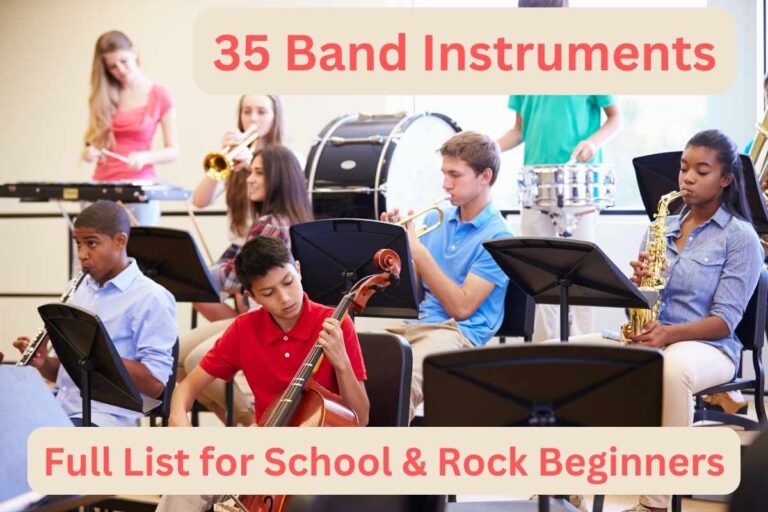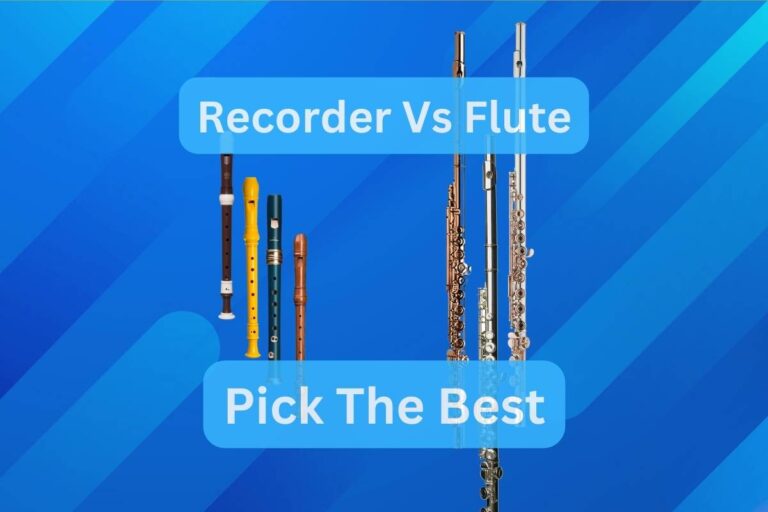11 Mariachi Instruments – Vihuela, Trumpet, Violin, Guitarrón (and more) For The Best Mariachi Band!

What are the “core” elements of Mariachi?! Are there “standard” Mariachi instruments?! Sure, there are!!
From the iconic trumpets and violins to the haunting vihuela and guitaron — each musical instrument has a unique sound that we all love Mariachi for.
In this post, I explore the core of mariachi — its instruments.
What is Mariachi And Mariachi Instruments?
At its core, mariachi is both the genre and the ensemble that performs it, a group of musicians in traditional charro outfits.
Mariachi groups traditionally express joy, struggle, and triumph through folk music. I love their grand attire and dynamics — they remind me of a Spanish theatrical orchestra!!
The group ranges from a quartet to a larger group of mariachi musicians (15 is the most common), each adding layers of sound.
You can solo perform with an instrumental play and vocals.. However, a single musician is not as captive as the full spectrum of the traditional band.
Mariachi includes fiddles (violins), horns (trumpets), strings (vihuela, guitarrón, guitar), and vocals — each contributing to the rich mariachi sound.
Fundamentally, Mariachi is about the “how” you perform than the music itself.
Mariachi mostly uses simple folk tunes with major and minor scales and standard time signatures (4/4, 3/4, and 6/8).
Two trumpets harmonize in thirds or sixths, adding a bright, brassy layer.
Two violins (or a mix of trumpets and violins) enrich the texture.
The rhythm section includes guitars (arpeggiating chords for harmonic support) alongside a bass guitar anchoring root-fifth patterns.
A traditional mariachi band breakdown of the “fundamental” instruments:
- Lead Singer. The heart of mariachi who uses a mix of falsetto and the “mariachi yell”.
- Secondary Singers. Supporting the lead.
- Guitars. Provide the main harmony and rhythm.
- Vihuelas. Cover the higher range of harmonies.
- Guitarrón. The bass guitar (an octave lower) to underline the rhythm and harmony.
- Violins. Carry the main melodies.
- Trumpets. Support the melodies of the violins.
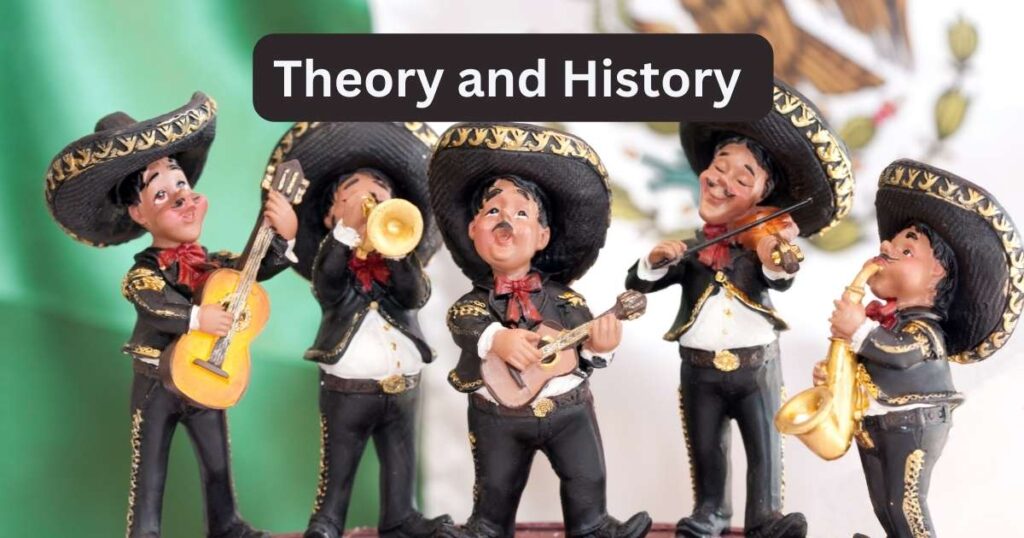
Theory and History of Mariachi Music
Mariachi shares other genres theoretical foundation.
Originating from ranchera music during the Mexican Revolution (1910-1921), mariachi was traditionally accompanied only by a single guitar.
In terms of evolution, the relationship between ranchera and mariachi is similar to that between blues and rock.
Mariachi used simple waltz-time signatures (3/4) and basic chord progressions such as I—V or I—IV—V. The lyrics reflected the rural life of those years.
The lead singer is a proud, romantic, and assertive heartbreaker. The interactions between the lead singer, the band, and the audience encourage the lead singer to display more passion, culminating in the iconic “mariachi yell!”
Mariachi historical roots go back to the late 17th (or early 18th) century in Jalisco, Mexico. Fun fact: The Spanish introduced violins for mass in church, but locals adapted fiddles for their bands.
Over time, mariachi became a staple at public gatherings, celebrations, and religious ceremonies across Mexico!
Mariachi is not only entertainment but also a part of communication — serenades (serenatas), the birthdays “Las Mañanitas”, weddings “El Son De La Negra”, and even Roman Catholic Masses (Mariachi folk Mass – La Misa Panamericana) highlight its cultural importance.
Mexican Cultural Influence on Mariachi Music
Although it’s not mainstream, mariachi music holds a special place within Mexican culture.
In Mexico, mariachi is the soundtrack for many cherished moments — from lively late-night celebrations to serene dinners among friends. However, not everybody in Mexico loves mariachi, much like some avoid jazz or classical music.
Mariachi music was promoted during Porfirio Díaz’s presidency around 1900. Díaz discovered the music from Jalisco State and elevated it above other regional music. This continued even after the Mexican Revolution, becoming a national symbol.
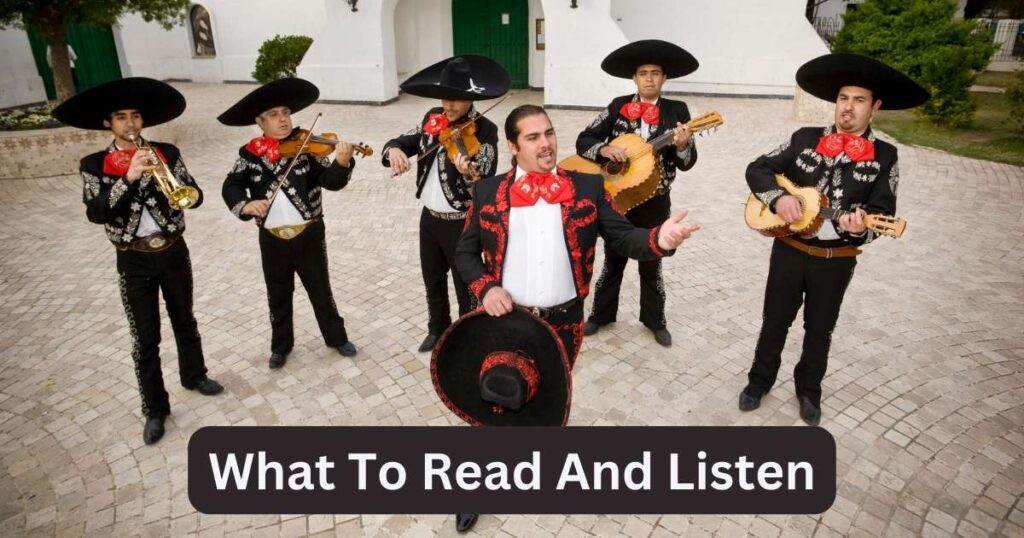
What To Read And Listen — Mexican and West Music
Much like jazz, with its “swung” eighths, Mariachi revolves around the “Caballito” (little horse) rhythm, where you play eighth notes in a “galloping” rhythm.
listen to classic tracks — “La Negra,” “El Relámpago,” “Camino Real de Colima,” and “La Vaquilla” — to truly appreciate this style.
Mariachi music includes a variety of sub-genres: the traditional “son jalisciense,” ranchera, huapango, and joropo.
Popular Mariachi Songs:
- “El Rey” (The King) — the quintessential (IMHO) mariachi track.
- “El Hijo Desobediente” (The Disobedient Son) — classic, close to ranchera music featuring a 3/4 time signature and a focus on rural life.
- “Amor Eterno“ (Eternal Love) — A large mariachi ensemble.
- “Como Quien Pierde una Estrella“ (Like Who Loses a Star) — a modern mariachi.
- “Cielo Rojo“ (Red Sky) and “Sombras” (Shadows) — the integration of violins and mariachi trumpets.
- “El Aventurero“ (The Adventurer) — the modern, dynamic style.
- “Hasta Que Te Conocí“ (Until I Met You) — incorporates elements of tango and bolero.
- “Cielito Lindo” (Beautiful Little Sky) — A song of Mexican pride, sung at national celebrations.
- “¡Ay, Jalisco, No Te Rajes!” (Hey, Jalisco, Don’t Back Down) — A call to cultural pride.
- “Las Mañanitas” (The Little Morning Song) — a staple at celebrations across Mexico.
Also, delve into the works of these legendary mariachi performers:
- Mariachi Vargas
- José Alfredo Jiménez
- Pedro Infante
- Vicente Fernández
- Lucha Villa
- Charro Avitia
- Cuco Sánchez
- Miguel Aceves Mejía
- Jorge Negrete
Instruments Used in Mariachi Bands
While guitars are often associated with mariachi music, horns and fiddles are arguably the “core” instruments.
Mariachi bands incorporate a variety of stringed guitar-like instruments and vocals to sound authentic in digital compositions.
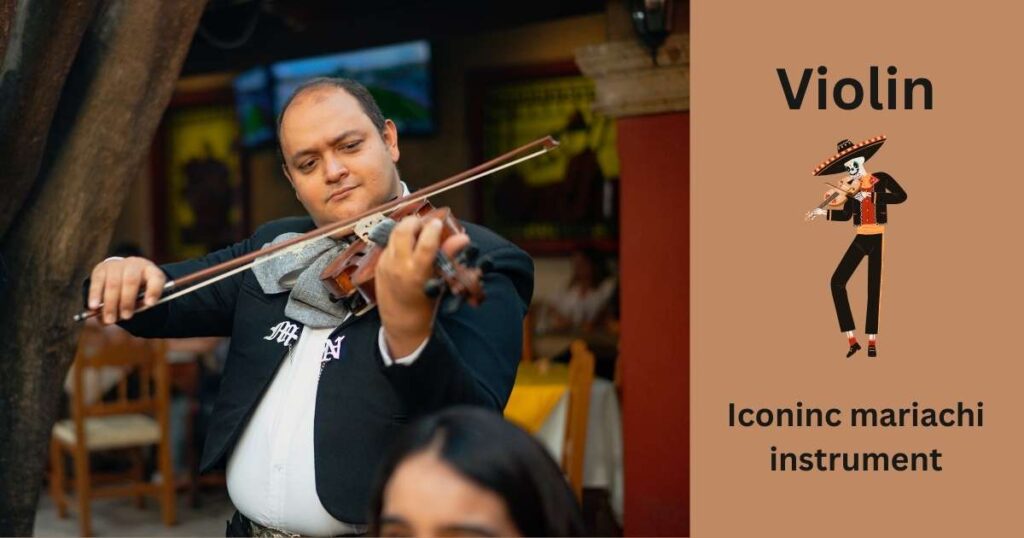
1 Violin – Iconinc Mariachi Instrument
The violin carries the weight of historical narratives and emotional depth, reflecting the people’s joys, sorrows, and everyday life.
A typical mariachi band features two first, two second, and potentially three third violins — making up a section of seven violins to carry the melody and harmonies.
Learning to play the violin is challenging, particularly in the context of mariachi music. It has no frets and requires good technical skills (fingerings and bowing techniques).
In mariachi music, you master a variety of performance styles — lyrical, flowing melodies or quicker, rhythmic passages — to match the energy and pace of the band.
Violins (suitable for mariachi) vary widely in price.
Beginner instruments start around $200 — $300 (including the bow and the case).
Intermediate violins cost from $400 to $1,000.
Professional-level range from $1,500 and go up to several thousand dollars.
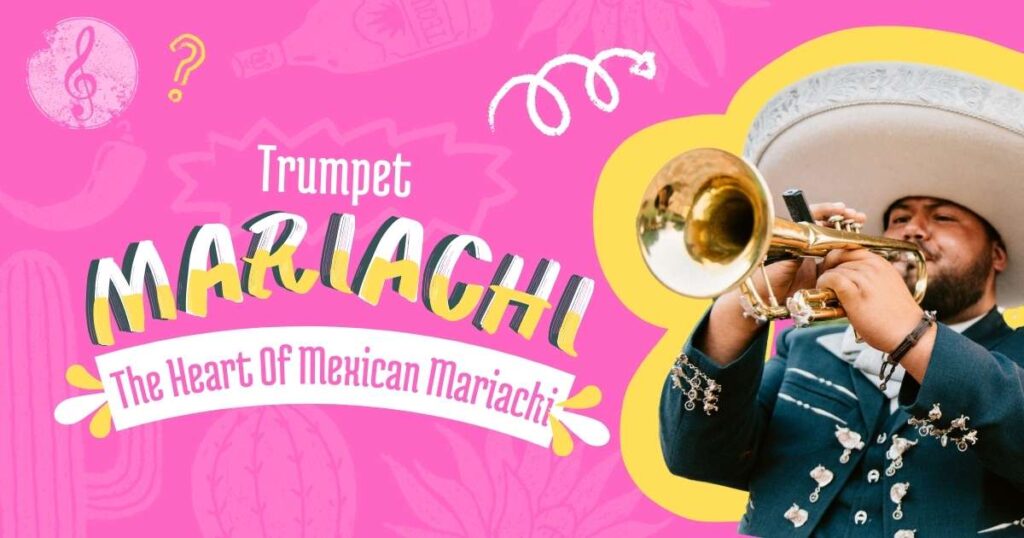
2 Trumpet — The Heart Of Mexican Mariachi
The trumpet is another “cornerstone” often described as the heart of the mariachi.
Trumpets’ penetrating sound adds vibrant and resonant tones, helping elevate the dramatic and emotional expression.
A standard group has two trumpets, though some might have three. It is rare and quite uncommon to have four trumpets.
The trumpet became a staple in mariachi in the early 20th century.
You need to master breathing techniques, mouth and lips positioning (embouchure), and pitch control through lip tension and the valves.
It takes a significant amount of practice to develop a clear, strong tone — similar to the demands of learning the violin.
Trumpets typically cost between $300 (beginning), $500-$1500 (intermediate), and $1,500 — $3,000 (for top-tier models).
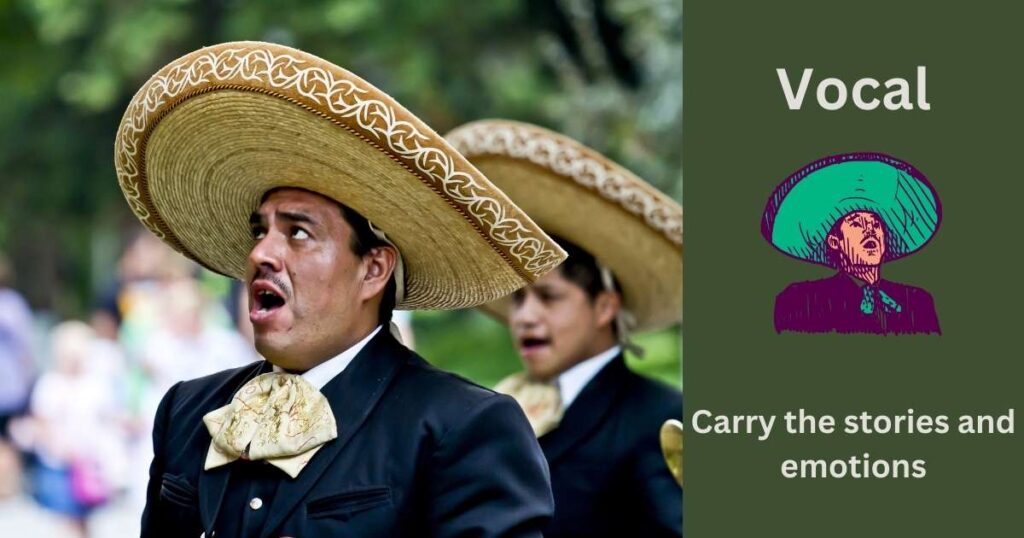
3 Vocal
Vocals in mariachi music, though not always present, are a big plus!
They carry the stories, emotions, and cultural expressions.
Early mariachi was more about instrumental music, but by the 19th century, the vocalists grew in prominence.
While not every mariachi member is a vocalist, most can play an instrument and contribute vocally.
Learning to sing mariachi is as challenging as rewarding.
Vibrato, the mariachi “grito” (a joyful yell), and falsetto passages are mariachi-specific techniques. These elements require control, stamina, and an emotional understanding of the music.
Besides strong vocal techniques, you also want to master Spanish (regional styles and dialects), as mariachi has deep roots in Mexican culture.
Unlike learning an instrument, the primary investment is in vocal training.
Private lessons range from $30 to over $100 per session. Workshops or group classes are a more economical option.

4 Guitarrón – Bass Guitar
The guitarrón mexicano (evolved from the bajo de uña) is central in the rhythm section of any mariachi band.
It resembles a large (hence its name translates to ‘large guitar’), fretless acoustic bass guitar with a short neck, a large, rounded back, and six strings — you can hear the guitarrón without amplification!
It projects a powerful bass sound heard over other instruments in the open air, similar to the double bass in other music forms.
The fretless nature of the guitarrón means that players must develop a keen ear to find the correct pitch and intonation.
Guitarróns start around $600 and go up to $3,000 or more.
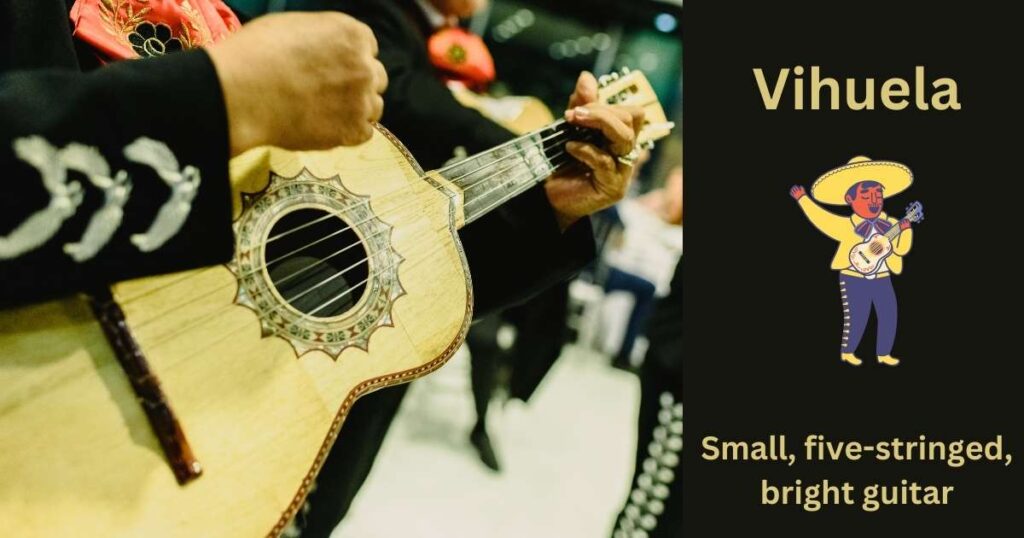
5 Vihuela
The vihuela is a traditional Mexican five-stringed instrument, much smaller than a classical guitar.
It has a convex back and produces a bright sound, essential for the polyphonic mariachi textures.
You tune it from high to low — E-B-G-D-A / Mi-Si-Sol-Re-La.
To play the vihuela, you need to master the “rasgueado” and “golpe”—specific patterns involving rapid, percussive strumming.
The price of vihuelas varies from $300 up to $1,500.
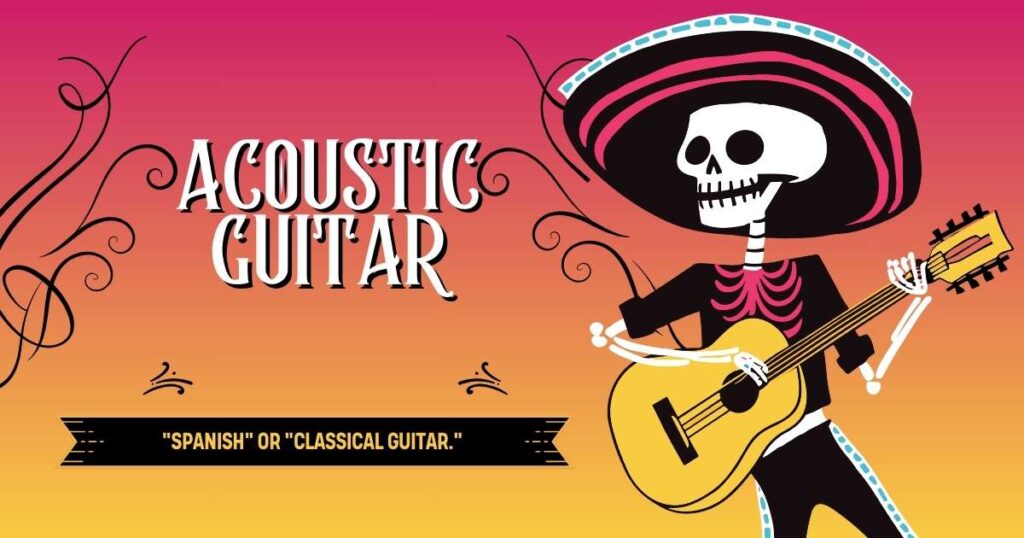
6 Acoustic Guitar
The term guitar generally refers to what many call a “Spanish” or “classical guitar.”
These guitars are a mainstay in mariachi bands, with at least two in a band.
In mariachi, the guitar is a cultural symbol that connects modern performances to the genre’s folk roots. It accompanies almost every mariachi song — a joyful serenade or a poignant ballad!!
You can get an entry-level guitar from $100 to $300. Intermediate and professional guitars would cost you $500 and above.
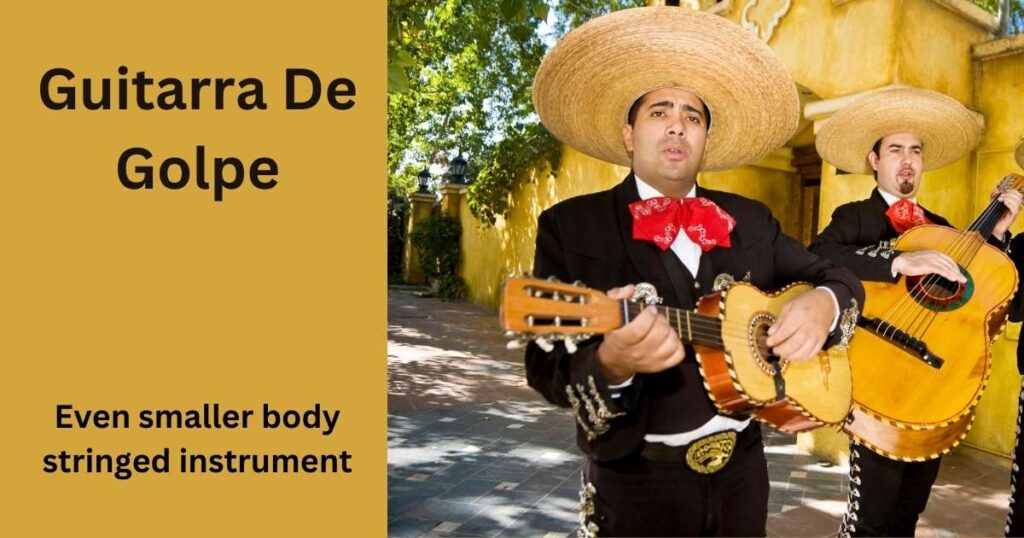
7 Guitarra De Golpe — Traditional Mexican Guitar
The Guitarra de golpe is another traditional Mariachi stringed instrument deeply embedded in the traditions of western Mexico, particularly in the states of Jalisco, Michoacán, and Nayarit.
Its construction differs from the classical guitar — a smaller body and five to seven strings.
Typically, you want to pre-order the guitarra de golpe as master craftsmen handcraft it, influencing its price. Solid-quality models cost between $500 and $1500.
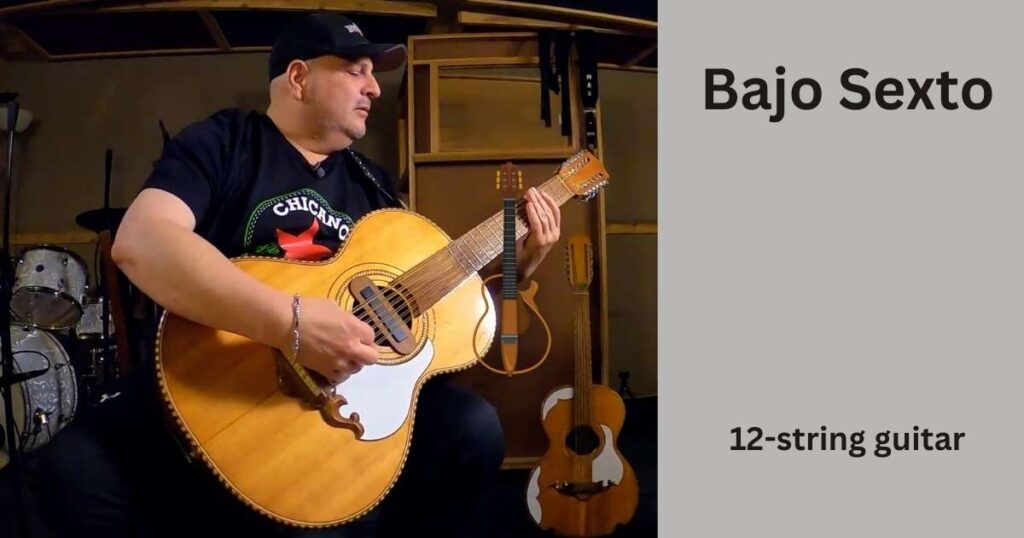
8 Bajo Sexto
The bajo sexto is a traditional Mexican string instrument, more commonly associated with Norteño music — but also finds its place in traditional mariachi bands.
The bajo sexto (translates to “sixth bass”) is a 12-string instrument with six courses tuned in pairs of strings. It comes from Northern Mexico and South Texas — you can hear it in Norteño and Tejano music genres.
In mariachi, the bajo sexto provide a deeper, richer harmonic support, complementing the guitarrón and vihuela.
Like the 12-string guitar, the bajo sexto’s large body and wide neck require significant hand strength. Handling the double-string courses adds complexity to chord formations and fingerpicking patterns.
Intermediate models cost $600 — $1,200, while custom-made bajo sextos range from $1,200 to over $2,500.
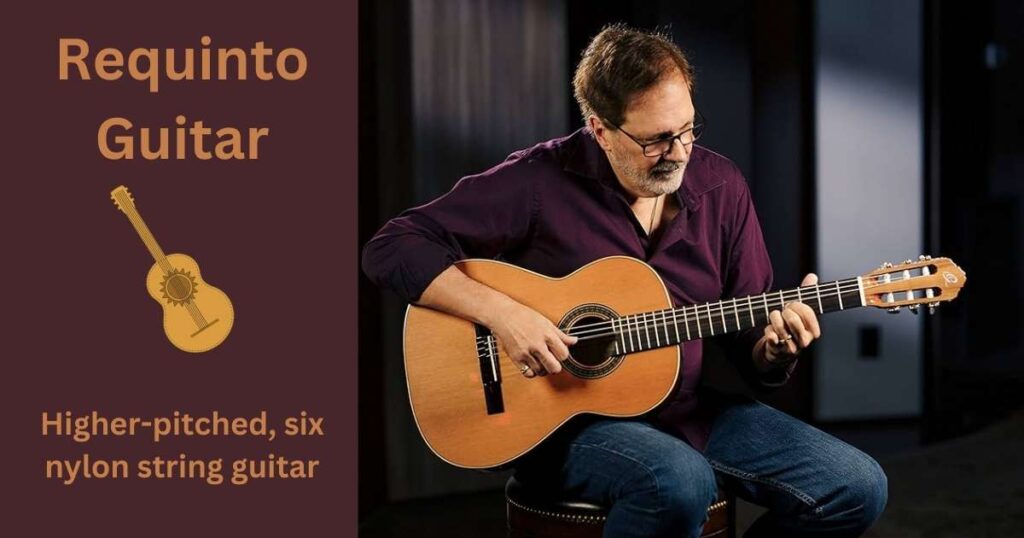
9 Requinto Guitar
The requinto guitar is more prominent in bolero and trio romántico and occasionally features in mariachi.
The requinto is a smaller, higher-pitched (one-fourth higher than classical) guitar that comes with six nylon strings.
This instrument has a clear, bright, and melodic sound — ideal for playing lead lines and intricate solos.
In mariachi, the requinto complements the deeper voices of the guitarrón and standard guitars.
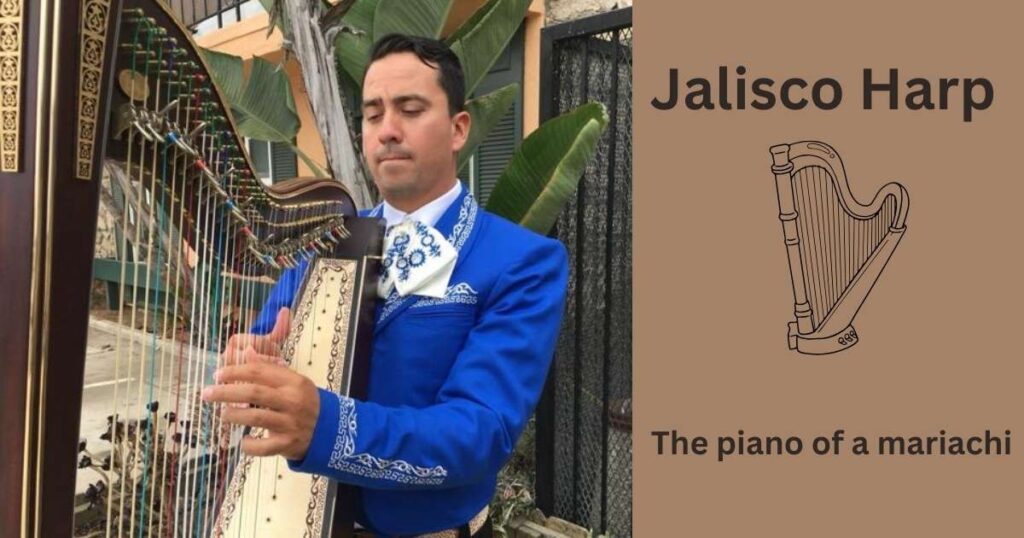
10 Jalisco Harp – Traditional Mariachi Harp
The Jalisco harp (“arpa jalisciense”) comes from the state of Jalisco, the birthplace of the mariachi.
This instrument is kinda like the piano of a mariachi, complementing the string and brass components.
The Jalisco harp has deep roots in the Mexican colonial period when the Spanish merged with indigenous musical traditions.
As a harpist, you must learn to manage the harp string arrangement — around 35 to 40 strings.
The cost of a Jalisco harp starts at around $1,000 and can easily go up to $20,000.
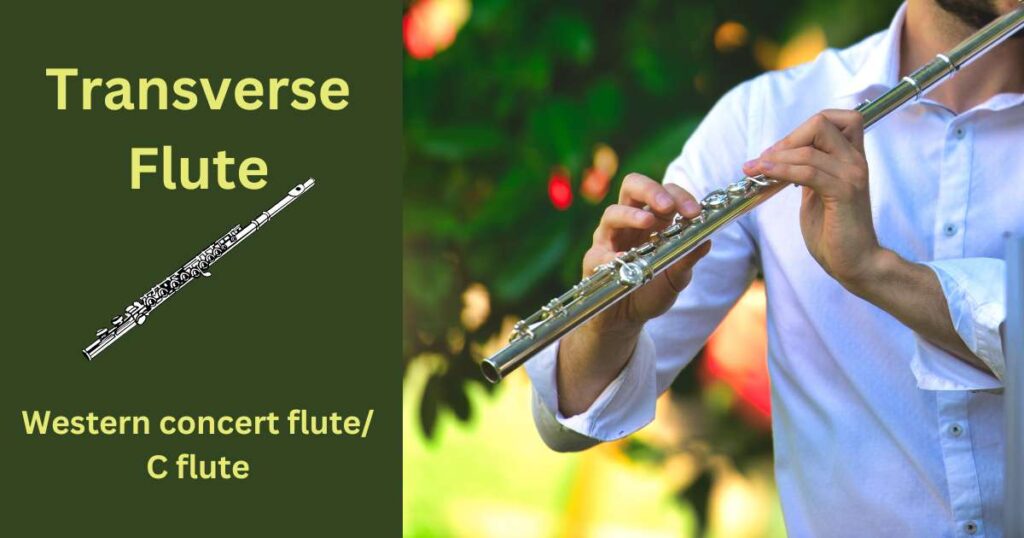
11 Transverse Flute
The Transverse flute (or the Western concert flute/ C flute) is not a traditional mariachi musical instrument, but you can find it in modern bands.
The flute blends well with the traditional sounds of the violin, trumpet, and guitar.
Beginners must learn how to hold the instrument, manage breath control, and develop embouchure (the shaping of facial muscles and the lips).
Silver-plated student models range from $300 to $600.
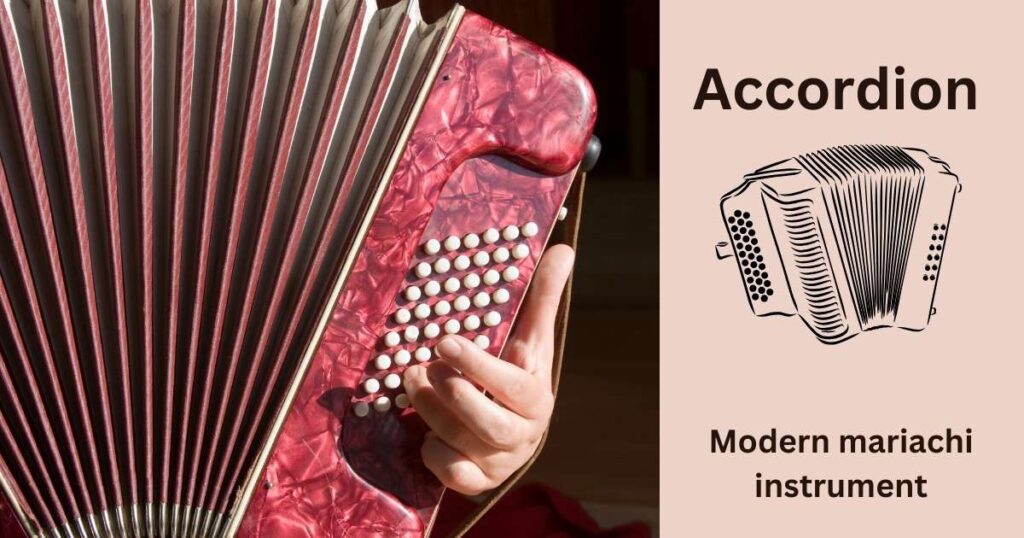
12 Accordion – Occasionally
The accordion’s integration into mariachi symbolizes the genre’s dynamic and evolving nature. Although not traditional, the accordion bridges traditional mariachi sounds and other popular Mexican music styles.
The accordion has its place in some modern mariachi bands, particularly in Mexican regions (such as Norteño), where the accordion is a staple.
Beginner accordions, typically smaller and with fewer features, range from $700. Professional-grade accordions (larger and feature extensive) start from $2,000.
The Harmony of Guitarrón, Vihuelas, and Guitars
In the traditional structure of mariachi music (particularly in the “son jalisciense”) a distinctive rhythmic pattern plays a crucial role.
This pattern typically unfolds in a 3/4 time signature, where the guitarrón, vihuela, and guitar synchronize to create a compelling two-measure groove.
In the first measure, the guitarrón (bass) hits the beats 1, 2, and 3, while in the second measure, it plays on the ‘and’ of 1 and beat 3.
The guitar and vihuela (the rhythm section) complement by playing a sequence of 1-st, 2-and, and 3-rd in the first measure and straight eighth notes in the second measure, accentuating the guitarrón’s hits.
What About Electric Guitar?
When the mariachi was first popular in the 19th century, the electric guitar had only appeared in 1931.
More critically, the electric guitar’s tone and the logistical challenges it presents don’t align with the traditional mariachi style.
Also, mariachi bands often perform while moving (around restaurants or crowded town squares), which is impractical with an electric guitar as it requires amplifiers.
Imagine a mariachi band maneuvering through a lively plaza, with one member tethered to an amplifier and managing an extensive electrical cord — clearly, this hinders the performance.
Conclusion: 11 Traditional Mexican Instruments
Traditional Mexican instruments open a vivid panorama of cultural stories, each played out through strings, wood, and breath.
From the bold depths of the guitarrón to the soaring notes of the flute, these are not just tools — they are storytellers of the Mexican spirit.
Each piece — the strumming vihuela, the harmonious guitar, the melodic Jalisco harp — contributes to tales of history, emotion, and tradition.
Through the universal language of music, they connect us to the enduring spirit of Mexico.

